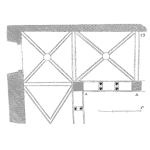
George discusses video reviews, options for training, and how to get funding.
Read moreYour Reliability Engineering Professional Development Site
A listing in reverse chronological order of these article series:
by George Williams Leave a Comment
by Mike Sondalini Leave a Comment

by Nancy Regan Leave a Comment

Equipment performance degrades unless it is maintained properly. Reliability Centered Maintenance (RCM) can help you figure out what preventive maintenance and Condition-Based Maintenance (CBM) you should be doing to get the Reliability you need from your equipment.
[Read more…]
Sir George Findlay was a prominent British railroad manager. He was the general manager of the London & Northwestern Railway, a major company that underwent nearly 20 years of expansion under his leadership.
His 1895 book, The Working and Management of an English Railway, described an organization for railway track maintenance. The basic gang had four people responsible for 4 miles of track. Supervision and management included inspectors, a chief inspector, and a divisional civil engineer. Each division also had draftsmen, masons, and other special crafts at their disposal.
[Read more…]by Mike Sondalini Leave a Comment

Pressure Flange Seal For Liquid Filter Pressure Vessel. When a leak occurs between pressure flanges and the arrangement cannot be successfully sealed, it is necessary to change the sealing design. This article explains a successful modification done to the lid and body flanges of a vertical pressure leaf filter used to remove particulate from a liquid stream. It incorporates a ‘tongue and groove’ sealing arrangement, with the ‘tongue’ in the lid flange and the recess in the filter body flange.
[Read more…]by James Reyes-Picknell Leave a Comment

Richard Beer and James Reyes-Picknell – long-time friends and colleagues like to talk about issues of interest to the asset maintenance management community. Between the two of them, there is nearly a century of experience in the field. Both have seen and lived the mistakes and lessons learned that we call experience.
[Read more…]by George Williams Leave a Comment
by Mike Sondalini Leave a Comment

This article outlines key concepts that an organization needs to be aware of to bring about optimal asset health by removing risks and managing their causes. The Plant Wellness Way EAM methodology focuses on the relationship between asset health and business performance. It contains the processes and analysis tools to develop a system-of-reliability that fully supports operating asset health for the greatest ROI from each asset throughout its life cycle.Risk is the total losses suffered when any asset’s components may fail. The causes of failure are the environmental and operating stresses that affect a component’s microstructure. This means that world class reliability is the effective, complete remove of the causes of failure, also known as risks, from your operations.
[Read more…]by Nancy Regan Leave a Comment

Does this make sense to you 👇🏻?
On my way to Boston to visit my sister yesterday, two Reliability Moments smacked me in the face.
[Read more…]by George Williams Leave a Comment

George Williams, CEO of ReliabilityX, explains the difference between reactive maintenance vs proactive maintenance.
Read moreby Alex Williams Leave a Comment

Reporting is one of the most important functionalities of computerized maintenance management software. Organizations spend a great deal of money to obtain data that they can use to make informed business decisions. The ultimate goal of implementing software for maintenance and facilities management is to achieve returns in the form of increased productivity and savings. A CMMS reporting module aids maintenance managers in achieving this goal by enabling them to receive data from maintenance technicians, analyze the data, and make continuous improvements. Reporting modules also allow users to produce graphs and charts of key performance indicators (KPIs).
[Read more…]by Andrew Kelleher Leave a Comment

We live in turbulent times. Transformational times. But what are the possible implications for the production industries and for process plant reliability engineering?
In 2020, Deloitte (Deloitte Touche Tohmatsu Limited) attempted to address the first part of this question by examining four (4) possible scenarios for the future of Europe’s chemical process industry. The results of their study (refer Figure 1) are relevant for many industries and suggest that “proactive transformation” will be required for a profitable and sustainable future (i.e., Scenario 1).
[Read more…]by Mike Sondalini Leave a Comment

For industrial operations struggling to get budgeted monthly operating results, we have a new book about building a “success system” in your company. If you want to ensure your monthly production targets and operating costs are always hit, read Industrial and Manufacturing Wellness.
Developed from the Plant Wellness Way, the Industrial and Manufacturing Wellness Enterprise Asset Management methodology gives you a systematic, structured approach to build a holistic, lifecycle business system that consistently gets you the best possible monthly production successes.
[Read more…]by James Reyes-Picknell Leave a Comment

Hot on the heels of my two articles (part 1 and part 2) about Data being unfit for purpose is another article by my colleague, Paul Daoust, just published in Canadian Business Quarterly.
[Read more…]by Mike Sondalini Leave a Comment

Adopting the business strategy of intentionally tightening process and work quality standards will drive operating profits higher. You get most operating profits when process and work quality variables are sitting on their optimal cost points. The Taguchi Loss Functions of your operation show the connection between your operating costs and your process and work quality.
Keywords: Taguchi Loss Function, quality verses cost, Quality Cost Function
[Read more…]